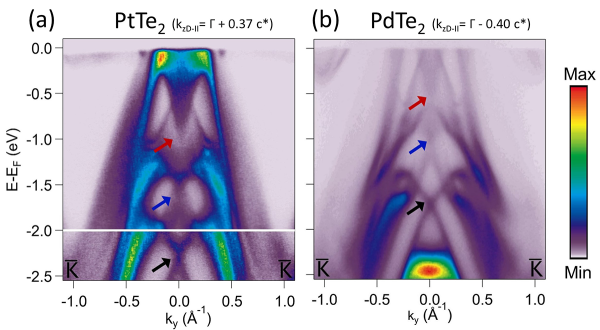Publications and Preprints
CSULB student co-authors are in bold and asterisk (*) denotes publications have co-authorship from both CSULB and OSU PREM partners.
Chirality effects in molecular chainmail
Alexander R. Klotz, Caleb J. Anderson, and Lisa M. Hall, “"Chirality effects in molecular chainmail", Soft Matter, (Advance Article) 2024
CSULB PREM faculty Alex Klotz worked with CSULB student Caleb Anderson and Michael Dimitriyev from the Department of Materials Science and Engineering at Texas A&M University to explore the effect of linking chirality on the curvature of polymer chainmail networks through simulations and optimization techniques.

Single-molecule analysis of solvent-responsive mechanically interlocked ring polymers and the effects of nanoconfinement from coarse-grained simulations
Diego Becerra, Alexander R. Klotz, and Lisa M. Hall, “Single-molecule analysis of solvent-responsive mechanically interlocked ring polymers and the effects of nanoconfinement from coarse-grained simulations”, Journal of Chemical Physics 160, 114906 (2024) https://doi.org/10.1063/5.0191295
CSULB PREM faculty Alex Klotz worked with OSU PREM faculty Lisa Hall and her postdoc Diego Becerra to simulate mechanically interlocked semiflexible ring polymers inspired by the minicircles of kinetoplast DNA (kDNA) networks. They were able to provide valuable insights into the conformational behavior of mechanically interlocked ring polymers, highlighting challenges in extrapolating single-molecule analyses to larger networks such as kDNA. Diego is now faculty in the Department of Chemical Engineering at Universidad de Concepcion in Chile.

Observation of a new three-dimensional Dirac-like dispersion in the type-II Dirac semimetals PtTe2 and PdTe2*
(preprint) Ivan Pelayo, Derek Bergner, Archibald J. Williams, Jiayuwen Qi, Mahfuzun Nabi, Warren L. B. Huey, Luca Moreschini, Ziling Deng, Jonathan Denlinger, Alessandra Lanzara, Wolfgang Windl, Joshua Goldberger, Claudia Ojeda-Aristizabal. "Observation of a new three-dimensional Dirac-like dispersion in the type-II Dirac semimetals PtTe2 and PdTe2", arXiv 2312.15371 (2023) https://arxiv.org/abs/2312.15371
PtTe2 and PdTe2 are among the first transition metal dichalcogenides that were predicted to host type-II Dirac fermions, exotic particles prohibited in free space. These materials are layered and air-stable, which makes them top candidates for technological. The PREM team was able to experimentally characterize the electronic band structure of PtTe2 and PdTe2 using Angle Resolved Photoemission Spectroscopy ARPES and Density Functional Theory DFT calculations, unveiling a new three-dimensional Dirac-like dispersion in these materials.

Electronic transport mechanisms in a thin crystal of the Kitaev candidate α-RuCl3 probed through guarded high impedance measurements
Patrick Barfield, Vinh Tran, Vikram Nagarajan, Maya Martinez, Amirari Diego, Derek Bergner, Alessandra Lanzara, James G. Analytis and Claudia Ojeda-Aristizabal. "Electronic transport mechanisms in a thin crystal of the Kitaev candidate α-RuCl3 probed through guarded high impedance measurements", Appl. Phys. Lett. 122, 243102 (2023) https://pubs.aip.org/aip/apl/article-abstract/122/24/243102/2896115/Ele…
α-RuCl3 is considered to be the top candidate material for the experimental realization of the celebrated Kitaev model, where ground states are quantum spin liquids with interesting fractionalized excitations. It is, however, known that additional interactions beyond the Kitaev model trigger in α-RuCl3 a long-range zigzag antiferromagnetic ground state. In this work, we investigate a nanoflake of α-RuCl3 through guarded high impedance measurements aimed at reaching the regime where the system turns into a zigzag antiferromagnet. We found that below about 30 Kelvin, transport is ruled by Efros–Shklovskii variable range hopping (VRH). Most importantly, our data show that below the magnetic ordering transition known for bulk α-RuCl3 in the frame of the Kitaev–Heisenberg model (7 Kelvin), there is a clear deviation from VRH or thermal activation transport mechanisms. Our work demonstrates the possibility of reaching, through specialized high impedance measurements, the thrilling ground states predicted for α-RuCl3 at low temperatures in the frame of the Kitaev–Heisenberg model and informs about the transport mechanisms in this material in a wide temperature range.


The Partnership for Research and Education in Materials (PREM) program between California State University, Long Beach and The Ohio State University is supported through a grant from the National Science Foundation (grant no. 2122199).





